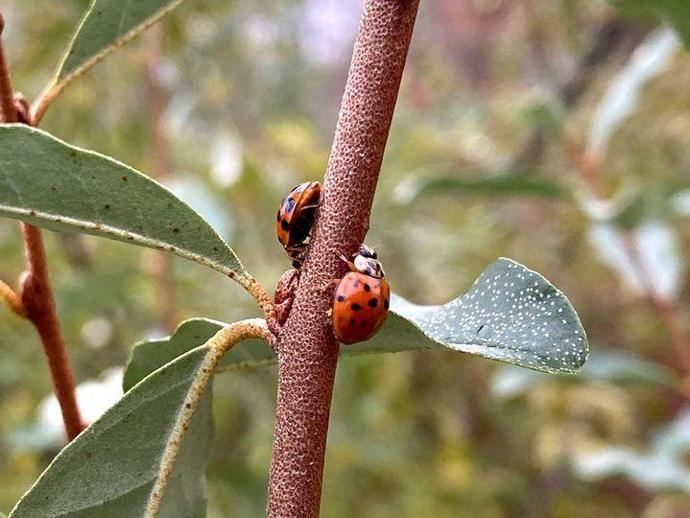November 16, 2021
Ben here with today's edition of #BenInNature presented by our friends at Carter Bank & Trust!
These little guys are Asian multicolored ladybeetles (Harmonia axyridis), and there's a whole lot of questionable information floating around about them right now. For example, I found one headline that read, "These biting beetles that look like ladybugs are swarming NJ." That headline makes it sound as though these insects love to bite people, are not actually ladybugs, and have suddenly appeared out of nowhere, all of which is a half-truth at best. While Asian ladybeetles can be a nuisance, they aren't anything to worry about (except from an ecological standpoint, but we'll get to that shortly).
First off, can they bite people? Apparently they can if provoked, but I've actively tried to get them to bite me and it hasn't happened yet. Considering their small size and tiny mandibles, I doubt they would even be able to break the skin.
Secondly, saying that Asian ladybeetles "look like" ladybugs is a bit like saying a golden retriever looks like a dog; it's technically true, and it's also a weird way to phrase the statement. Asian ladybeetles belong to the family Coccinellidae, which is the ladybug family, so I think it's safe to say they're ladybugs.
Three, these little guys certainly didn't suddenly appear out of nowhere, although the warm weather this fall has perhaps made them more visible for a longer period of time. While this species is native to eastern Asia, it was first introduced in the U.S. way back in 1916, although the populations didn't truly explode until the late 1980s. These beetles were intentionally introduced in the U.S. to help control agricultural pest insects like aphids (the favorite meal of ladybugs everywhere). They're quite effective at eating aphids, but they have some other bad habits that make them pests.
For one thing, these beetles become dormant when the weather cools and overwinter as adults. They have a tendency to try to overwinter in tiny cracks and crevices, and our homes provide plenty of excellent spots for them to hide. When we turn on our heat as the weather turns cool, the ladybugs that have made it inside our homes begin to wake up and fly and crawl around. Not only is this annoying, but the beetles also release a defensive chemical when they feel threatened that can stain fabrics and surfaces.
While that's certainly a pain in the neck, for my money, the worst thing about these beetles is that they're outcompeting our native ladybug species. When the Asian ladybeetle establishes itself somewhere, the native ladybug species experience a rapid decline in abundance. I've noticed anecdotally that it's getting harder and harder to find native ladybugs, and there are a few species I simply cannot find at all. That loss of diversity is the real bad news about these guys; as far as the biting goes, I wouldn't lose any sleep over it.
ABOUT #BenInNature
Social distancing can be difficult, but it presents a great opportunity to become reacquainted with nature. In this series of posts, Administrator of Science Ben Williams ventures outdoors to record a snapshot of the unique sights that can be found in the natural world. New updates are posted Monday - Friday, with previous posts highlighted on the weekends. This series of posts is made possible thanks to the support of VMNH Corporate Partner Carter Bank & Trust (www.cbtcares.com).
NATURE PHOTO IDENTIFICATIONS
If you discover something in nature that you would like help identifying, be sure to message us right here on Facebook with a picture (please include location and date of picture) and we'll have our experts help you identify it!

 Hours & Admissions
Hours & Admissions Directions
Directions

